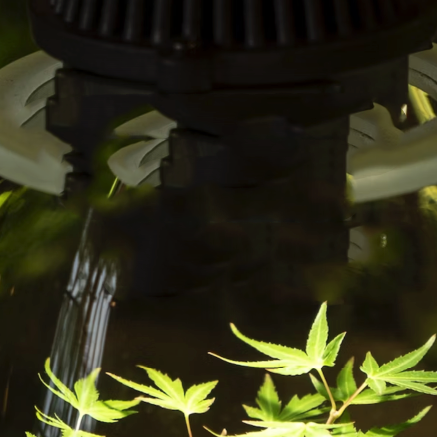Thinking of Upgrading Your Reflector?
A reflector is pretty much an essential part of an HID (High Intensity Discharge) grow light set up. It is true that some thrifty big American growers simply hang an HPS lamp vertically, dangling by the power cord from the ceiling. We wouldn't recommend this as strain can be put on the cable and the connection into the lamp holder.
In this post we take a look at whether it is worth upgrading a basic reflector up to something a bit more expensive.
If you have a fairly basic grow light setup then you will likely have a magnetic ballast, a budget HPS lamp and probably a basic Euro Reflector. These are sometimes called a barn reflector because they have the same shape as the roof of an American farm barn.
Euro reflectors are OK at the basics of holding the lamp and throwing at least some of the light from it back downwards. But, they are a bit flimsy!
So, let's take a look at whether it is worth the cost to upgrade to a more professional reflector.
The 2 main differences between reflectors is the light footprint that they throw down and how reflective they are. Here at One Stop we have an specific test area for finding the the footprint of reflectors. However, we have to rely on manufacturers' honesty about the reflectivity of their products which is not really ideal but it's the best we've got!
Right, before anything else, let's take a look at the Euro reflector.
We have searched high and low but we can't seem find out what the reflectivity of it is. Quite often, if a specification isn't mentioned about a product then it's because it's nothing to shout about. However, we can hazard a guess that it'll be 85% or less.
Now, let's take a look at the footprint it throws down. We know that some growers use their Euro reflector as comes out of the box, and some bend the wings up so it's flat. We did a test to see how the wing position changed the footprint
Here is the footprint as it comes (unbent) over a 1.5m square area with a 600w HPS lamp:
...and here is the footprint with the wings bent up:
You can see the footprint is much more even with the wings bent up.
A Look at some Pro Reflectors
A good upgrade from the Euro reflector is one from the Adjust-a-Wings range. They feature adjustable wings and adjustable lamp height. There are 3 main models - The Enforcer (86% reflectivity), the Defender (92% reflectivity), and the Avenger (95-97% reflectivity).
There are 3 wings positions and 3 lamp heights, which give markedly different footprints but a good, general purpose config is medium wing position and medium lamp height.
Here is the footprint over a 1.2m square area with the wings in the medium position and the a medium lamp height:
You can see that the footprint is superior to the one put down by the Euro. It is wider and flatter. This means that more parts of your plants are hit by the light from different angles.
This umbrella shaped parabolic reflector is called versatile because the lamp can be fitted either vertically or horizontally.
The great thing about parabolic reflectors is that they give a very even light footprint, although they are quite large. This particular model has slots in the top to allow hot air to rise out of them, preventing a build up of heat. As a result is it runs surprisingly cool.
The Reflectivity is around 90% and along with the very even footprint this reflector is bound to give you a yield increase of around 10% over the Euro reflector. The footprint when the lamp is in the horizontal position as opposed to the vertical position. Arguably the footprint is bigger and better with the lamp in the horizontal position, but as can be seen in the graphs it is less even.
The versatile parabolic reflector is 95cm in diameter, but it is supplied flat-pack for ease of transport. The leaves must be bolted on by the customer before using. It's around a 10-15 minute job but it is well worth the time for the end result. Growers who use parabolic reflectors tend to swear by them and won't use anything else.
The Conclusion
So, to go back to original question - Is it worth upgrading a basic reflector with a higher quality model? the answer is this:
If a gain of 10% in yield is worth more than the cost of the upgrade (and to most growers it definitely is) then the answer is a resounding "Yes".

